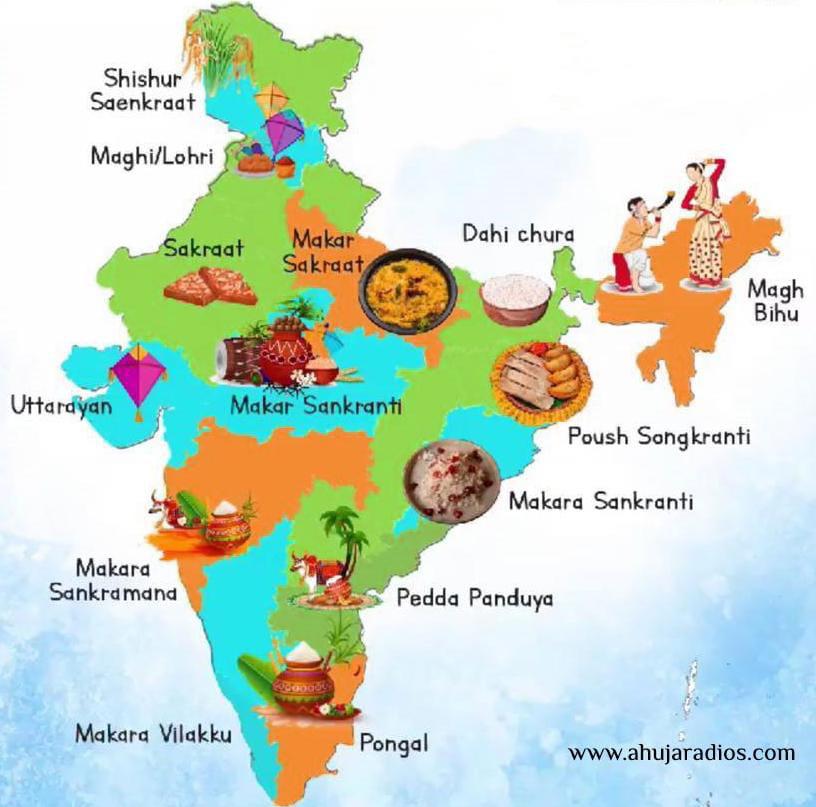Makara Sankranti also celebrated as:
Uttarayana,
Sankranti,
Til Sakraat,
Magha,
Môkôr Sôṅkrānti,
Mela,
Ghughuti,
Pedda Panduga,
Bhogi,
Sakraat,
Pongal,
sakrat,
khichaṛi,
Maghi Sangrand
Makara vilak
Uttrain
Lohri
Bihu etc etc, is one of the very few Hindu festivals based on the solar calendar instead of the lunar.
Astronomical Importance: Makar Sankranti is the celebration of the sun’s journey from the Southern to the Northern Hemisphere-Uttarayana, and is considered an auspicious time. Makaar translates as ‘Capricorn’ and Sankranti means ‘transition’. It depicts the earth moving closer to the sun which marks the end of winter solstice.
Agricultural Festival: The Hindus observe it as threshold of the harvest season _-A time when harvesting is over and Thanksgiving in the form of distributing sweets made of Sesame and Jaggery/sugar and food grains.
Religious: Makar Sankranti is a celebration of Lord Vishnu defeating the demon Sankarasura, symbolising the victory of good over evil.
It is believed that Mother Ganga was released from the hair locks locks of Lord Shiva after King Bhagiratha brought her down to earth from Heaven. She followed Bhagiratha and reached Kapil Muni’s ashram and finally merged into the ocean. The day of Merger is celebrated as Makara Sankranthi.
Devotees observe this triumph through prayers, rituals, and visits to holy rivers/confluence of rivers for spiritual cleansing.
Each state celebrates Makar Sankranti with unique customs and traditions, transforming the festival into a thread that intricately weaves the cultural tapestry of the nation. Kite Flying is a major event that happens across the nation.
A Festival signifying Unity in Diversity.



